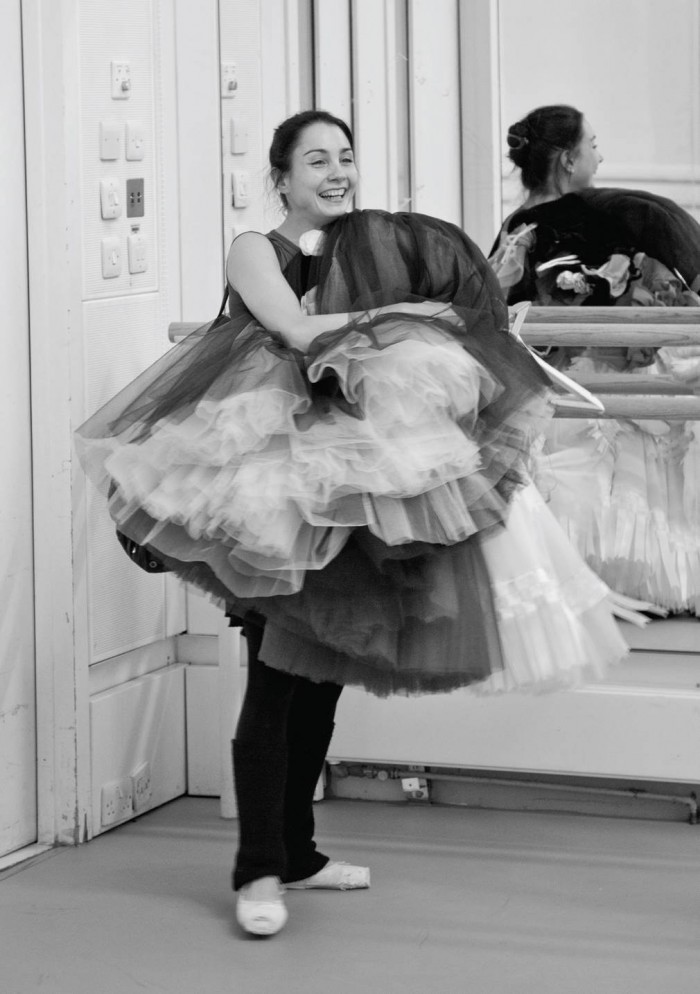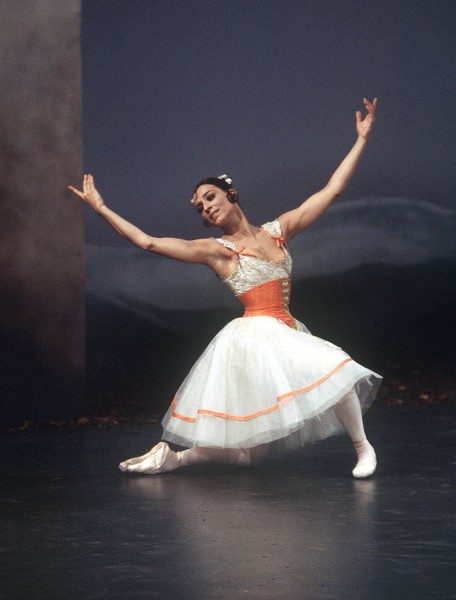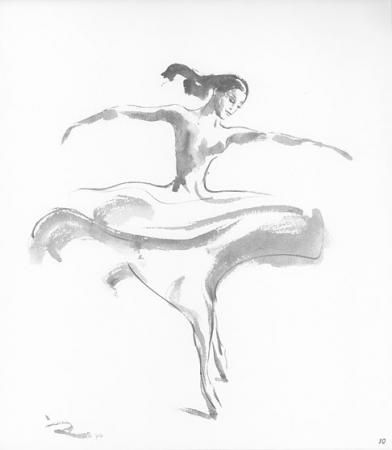She Said
BY WIEBKE SCHUSTER
“It’s like throwing tradition back in a traditionalist’s face.”
A recent reaction from me while ranting on about why, in an art form traditionally about women, it is still so hard to come by female artistic directors or women in leadership positions. When asked about that very question in an interview with The Stage, double-threat Tamara Rojo, principal ballerina and artistic director of the thriving English National Ballet (ENB) replied:
“I think women want to be absolutely certain they know they will be capable of fulfilling a role before committing to it. Maybe men are more willing to take on challenges that they have no skills for?”
Rojo made sure she was prepared when she took over ENB in 2012. She’d been planning for her retirement from the stage since she was 20 years old. She was passionate about learning the ins and outs of various funding models for the arts and becoming familiar with the best practices in fundraising and business analytics. She always had big plans.
Tamara Rojo, Photo by Andrej Uspenski
“If my government asks me: How do we make a ballet company? I have to know.”
She said.
Now, a good 20 years later, she’s leading a company of 70 dancers. She’s established an all-female choreographers evening entitled “She Said,” developed ENB’s Dance for Parkinson’s program, and founded a new state-of-the-art home for the company and school in South East London, to name a few accomplishments. And there are more stories like hers in ballet companies with long-standing traditions.
One of them is the founding artistic director of the Bavarian State Ballet, Konstanze Vernon. Under her leadership, the company emancipated from being an “appendix” of the Bavarian State Opera to a full-fledged ballet company in 1988. Vernon’s name became “a synonym for ballet in Germany,” as one news outlet wrote in her obituary. Hired into the ranks of the Berlin Ballet at age 14 and soon hired by Heinz Rosen at the Munich Opera, she performed for nearly two decades. While still dancing, she began to set up pedagogical frameworks, realizing that an international ballet company has a commitment to nurturing dance talent. Vernon merged the children’s opera ballet chorus with the local university department, carving out a new infrastructure for ballet education in Bavaria. She even set up a foundation in the name of her late partner, Heinz Bosl. Until 1998, Vernon pushed her artistic vision for the Bavarian State Ballet forward, setting up a sizable repertoire and international touring engagements for the young company. Perhaps most importantly, Vernon founded a tradition of collaboration, connection, communication and an innate business savvy. Her philosophy was fördern durch fordern, which loosely translates to “promote by demanding.” She demanded resources, time and open-mindedness from the city, the state, her colleagues and her students. Vernon was as an “incorruptible” person with a big heart.
Konstanze Vernon in Giselle
“I saw it and knew—this is it and nothing else.”
She said, about falling for dance.
Now, at the beginning of a new season in Munich, this legacy seems to be at a crossroads. In 2016, Igor Zelensky took over the reins at the Bavarian State Ballet and, without having been on the job for even one day, he laid off one third of the company’s roster, causing BSB’s sole sizable individual donor, Irène Léjeune, to jump ship. With her went 1.3 million Euros of the company’s annual subsidy, downsizing it to a relatively small $7.3 million budget, according to the Sueddeutsche Zeitung. Not to mention the discontent caused among fans over letting some of their favorite dancers go (among them international prima, Lucia Lacarra) and a lack of communication with the local press. What happened to the ‘traditions’ of ballet in Bavaria?
My path only intersected briefly with Frau Vernon (as her students called her). I don’t remember her spending much time at the rehearsal house in the center of Munich’s historic core, for which she rallied when the company outgrew its opera annex shoes. I began to feel her presence more and more after she passed, a few short months later in early 2013. Standing in the Gsovsky Studio, for example, which was named after Russian ballet coach Tatjana Gsovsky, Vernon’s first teacher, it began to sink in. I started searching for photographs in our archives, scavenging VHS tapes and YouTube for recordings of Vernon and her partner Heinz Bosl from the ‘70s. I felt her presence most strongly in the eyes of her dancers—and former students—who were shaken by her loss. She was present in the lives of the people around her.
In 1998, Vernon handed the scepter over to her #1 candidate for the post of artistic director, dancer Ivan Liška, who hopped straight off the stage in Hamburg into BSB’s offices. He expanded on Vernon’s legacy and vision with a strong team of artistic strategic advisors by his side. Associate artistic director Bettina Wagner-Bergelt, for example, is a strong force in Germany’s dance scene in her own right. She played a key role in landing the Bavarian State Ballet’s many firsts: the first ballet company to perform a Cunningham reconstruction and recently, in 2016, For the Children of Today, Yesterday and Tomorrow by Pina Bausch, to name just two of Wagner-Bergelt’s coups.
Now, with Zelensky in charge, is the ballet company at danger of being re-annexed to the opera? What if the powers-that-be had chosen a different candidate to succeed Liška? Why overlook Lucia Lacarra as a candidate, for example, after spending the better half of her career in Munich? Lacarra, like fellow Spanish countrywoman Tamara Rojo, is a Victor Ullate graduate with a keen sense for making strategic career steps and managing her own brand. She is well-respected by her colleagues and loved by the public and the international press. Lacarra, like Vernon, Liška and Rojo, has lived through the consequences (good and bad) that artistic director’s decisions have on dancers—in the studio and onstage—and therefore has the knowledge it takes to make choices that benefit dancers’ health, wellness and careers. Sounds like a solid recipe for success… After all, without dancers on stage, there is no company to run.
And anyway, ballet is about women. So women should be in charge more. If we’re going to be traditionalists, why not choose traditions that have led to success?
Konstanze Vernon in Das Maedchen und der Tod, Courtesy of Tanzarchiv Leipzig
~~
Wiebke Schuster grew up in Germany. She received her B.A. in dance theatre from TRINITY/LABAN Conservatoire of Music and Dance in London and went on to test her feet in the New York dance scene. There, she performed at venues such as Judson Church, New York City Center and the Ailey Citigroup Theatre. After returning to Germany, she worked administratively at the Bavarian State Opera and Ballet before moving to Los Angeles to pursue an M.A. in arts journalism from USC. She currently works in San Francisco as a grants writer for the Yerba Buena Center for the Arts.



